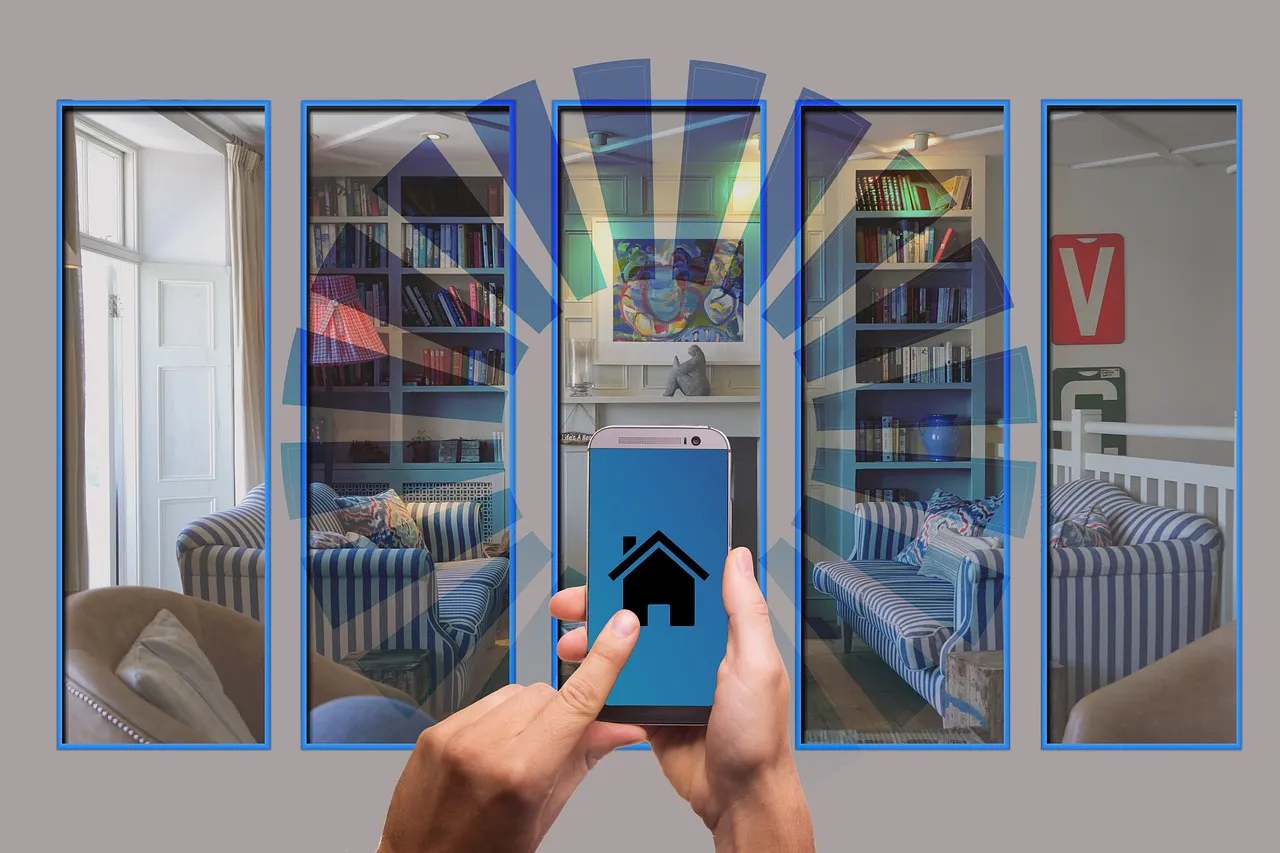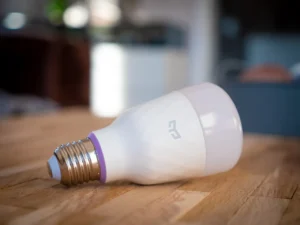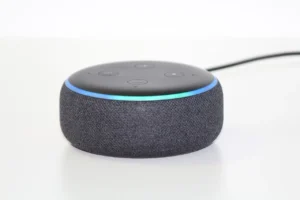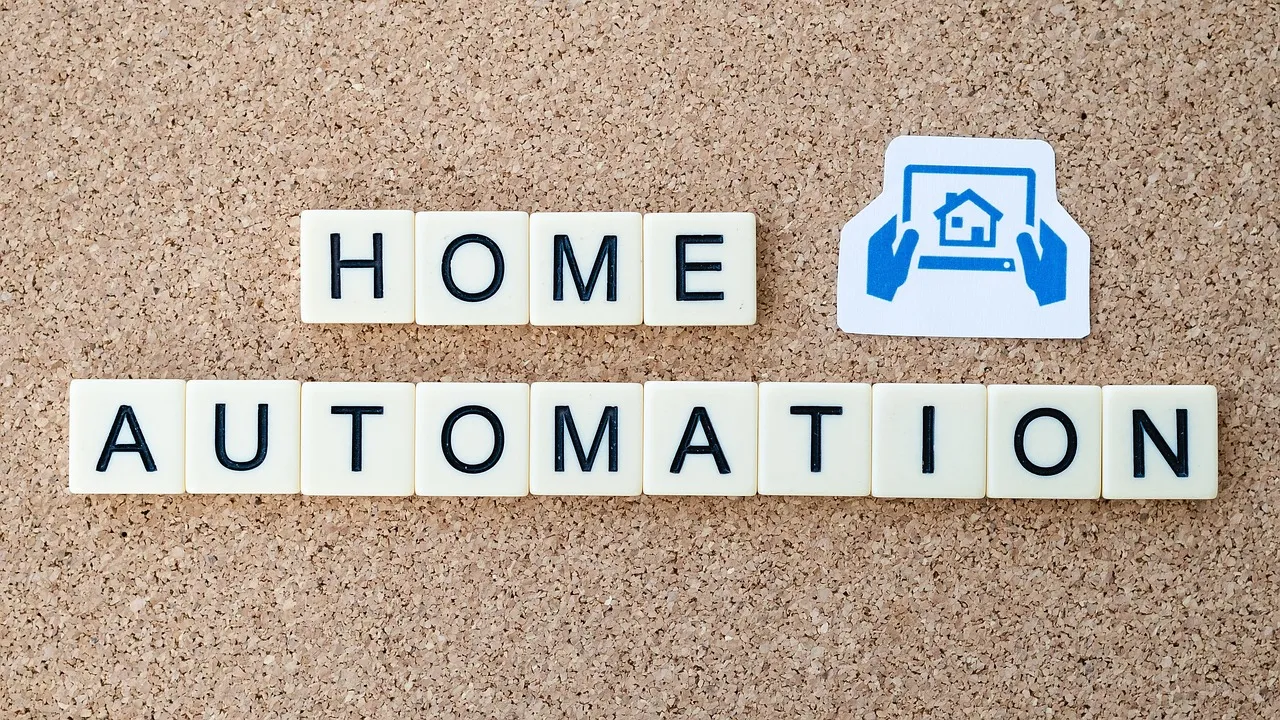In 2025, smart home technology is evolving beyond convenience and efficiency. Today’s innovations focus on wellness and privacy, reshaping the way we live, breathe, and sleep. From AI-integrated security systems to circadian lighting that mimics natural daylight, the future of home automation is both health-conscious and privacy-aware.
As the demand for secure and healthy living spaces grows, integrating these technologies not only enhances comfort but also boosts property value—making it a high-return investment for tech-savvy homeowners.

Circadian Lighting Systems: Syncing with Your Natural Rhythm
In today’s fast-paced digital world, where screen time and artificial lighting disrupt our natural biological rhythms, circadian lighting systems are emerging as one of the most essential smart home innovations. These intelligent lighting solutions are designed to mimic the natural progression of sunlight throughout the day, supporting your body’s circadian rhythm—the internal clock that regulates sleep, mood, and overall wellness.
Unlike standard lighting, smart LED circadian lighting systems dynamically adjust color temperature and brightness based on the time of day. In the morning, they emit cool, blue-toned light to promote alertness. As the day transitions into evening, the lights shift to warmer, amber hues that signal your body to wind down and prepare for restful sleep.
How Circadian Lighting Works in Smart Homes
Modern home automation lighting systems integrate with smart home platforms such as Google Home, Amazon Alexa, and Apple HomeKit, allowing homeowners to automate lighting schedules or manually adjust settings using voice commands or mobile apps. Some advanced systems also use AI or occupancy sensors to personalize lighting environments in real time based on your presence and activity.
Key Benefits of Circadian Lighting Systems
-
Promotes Better Sleep Quality
Disrupted sleep due to blue light exposure is a major health concern. By simulating sunrise and sunset, circadian lighting helps regulate melatonin production, ensuring deeper and more restful sleep.
-
Improves Mental Focus and Productivity
During the day, exposure to bright, cool-toned light boosts alertness, mental clarity, and productivity—ideal for remote workers, students, and home office setups.
-
Reduces Eye Strain and Fatigue
Smart LED systems can adjust brightness automatically depending on ambient light levels, reducing eye strain during long work or screen hours. This is particularly beneficial for those with sensitivity to harsh indoor lighting.
-
Energy Efficiency and Cost Savings

LED-based circadian lighting consumes significantly less energy compared to incandescent bulbs. Combined with automated dimming and occupancy sensing, this translates to lower electricity bills and a smaller environmental footprint.
- Supports Mental and Emotional Well-Being
Numerous studies show that proper lighting can influence mood regulation. Circadian lighting contributes to a healthier indoor atmosphere, reducing symptoms of seasonal affective disorder (SAD) and supporting mental resilience.
Installation and Integration Tips
- Opt for smart LED bulbs compatible with your current smart home ecosystem (e.g., Philips Hue, LIFX, or GE Cync).
- Use a smart lighting hub or bridge for better customization and automation.
- Program your lighting to follow a 24-hour natural cycle or tailor it to your personal schedule via mobile apps.
Advanced Air Filtration: Breathing Cleaner Indoors
Using built-in laser sensors and air quality monitors, smart purifiers continuously scan your indoor environment. When pollution levels rise, they automatically adjust fan speed and filtration intensity. Most models are fully Wi-Fi enabled, offering real-time air quality updates and control through dedicated mobile apps or voice assistants like Google Home and Amazon Alexa.

Top Features of Smart Air Purifiers
-
Real-Time Air Quality Monitoring
Advanced models come with integrated PM2.5 sensors and VOC detectors that provide up-to-the-minute updates on pollutants and allergens present in the air. Some models also track CO₂ levels to ensure optimal ventilation.
-
HEPA and Activated Carbon Filtration
The gold standard in filtration, HEPA filters remove microscopic particles as small as 0.3 microns, while activated carbon layers absorb harmful gases and odors. This dual-layer protection is vital for asthma patients, allergy sufferers, and homes with pets or smokers.
-
Smart Home Integration
Smart air purifiers seamlessly connect with ecosystems like Amazon Alexa, Google Home, and Apple HomeKit, allowing users to control settings with voice commands, automate schedules, and integrate with routines like “sleep mode” or “away mode.”
-
Energy Efficiency
Many models use low-power motors and smart sensors to optimize energy consumption. Features like auto shutoff and eco mode help reduce electricity bills while maintaining top-tier air quality.
-
Child and Pet Safety Features
For families, child-lock functionalities and pet-safe operation modes make these purifiers a practical and safe addition to any household.
Who Benefits the Most?
Smart air filtration systems are ideal for:
- Families with young children sensitive to dust or pollution
- Asthma or allergy sufferers requiring hypoallergenic environments
- Pet owners managing dander and odors
- Remote workers and home-based professionals seeking fresh, clean air for better focus and health
In today’s post-pandemic world, where airborne viruses remain a concern, these devices are becoming a must-have for every health-conscious home.
AI-Integrated Security: Smarter, Safer Homes
As smart home technology advances, AI-integrated security systems are becoming the gold standard in home protection. Unlike traditional CCTV cameras that merely detect motion, these next-gen systems use artificial intelligence to identify people, objects, and even pets, offering granular, context-aware alerts.
By combining facial recognition, object tracking, and machine learning algorithms, these systems provide homeowners with detailed insights—not just that something moved, but who or what triggered the alert. This results in fewer false alarms, better security event management, and greater peace of mind.
Features You’ll Love
- Facial Recognition for Trusted Family and Guests
AI-enabled security systems recognize known faces and distinguish between residents, guests, and strangers. You’ll receive intelligent notifications like “Emily arrived home” instead of generic “motion detected” alerts.
- Real-Time Intruder and Object Alerts
Get instant push notifications for unidentified faces, package deliveries, or even unusual movements like someone jumping a fence or lingering near your door.
- Integration with Smart Locks and Automation Hubs
Seamlessly connect your AI security cameras with smart locks, video doorbells, and home automation platforms like Amazon Alexa, Google Home, and Apple HomeKit. Automatically lock doors or activate lights when suspicious activity is detected.
- End-to-End Encryption and Cloud Privacy
Modern AI-powered surveillance systems feature military-grade encryption and secure cloud storage, ensuring your footage is protected from cyber intrusions.
Privacy-First Devices: Physical Shutters and Local Data Storage
As concerns about data breaches, camera hacks, and corporate surveillance grow, the demand for privacy-first smart devices is rising rapidly. These devices prioritize user control, transparency, and local data processing over cloud dependence.
Built for privacy-conscious homeowners, these gadgets feature physical camera shutters, hardware microphone switches, and the ability to store data locally, removing the need to send sensitive footage to the cloud.
Why It Matters
- Prevents Unauthorized Access to Cameras and Mics
Smart devices like cameras and speakers come with manual lens covers and mic kill switches, ensuring you’re protected even if the software is compromised.
- Empowers Users to Control Data Usage
Unlike cloud-first devices, privacy-first tech offers granular control over permissions, local-only processing, and open-source transparency, giving users the ultimate say over where and how their data is used.
- Complies with GDPR and Global Privacy Regulations
These devices are built to align with strict privacy frameworks such as the General Data Protection Regulation (GDPR), CCPA, and ISO/IEC 27001, reducing legal risks and ensuring ethical tech usage.
- Supported by Leading Privacy-First Brands
Brands like Apple, Eufy, Home Assistant, and Purism lead the movement with offline-capable, encrypted, and open-source solutions.
Why Prioritizing Wellness and Privacy is a Smart Investment
Whether you’re a homeowner, tech-savvy renter, or real estate investor, incorporating wellness and privacy-first smart technologies pays dividends:
- Increase Property Value: Homes with integrated smart health and security systems sell faster and at premium prices.
- Reduce Energy Costs: Smart automation reduces wastage and optimizes resource use.
- Enhance Quality of Life: Better air, sleep, safety, and peace of mind all contribute to improved mental and physical wellness.
In an era where cybersecurity and health-conscious living are top priorities, these aren’t just “nice-to-have” features—they’re non-negotiable essentials for the modern home.

Conclusion
Smart home innovation in 2025 is no longer about just convenience—it’s about protection, prevention, and personalization. From circadian lighting that improves sleep to AI surveillance that distinguishes friends from threats, and privacy-first devices that give you control, the latest technologies are engineered with human wellness and digital dignity at the core.
FAQs
Q1: Are circadian lighting systems energy efficient?
Yes, most use energy-efficient LED technology and programmable timers to minimize electricity consumption.
Q2: Do privacy-first smart devices function without internet access?
Absolutely. Many offer offline modes, local data storage, and open-source firmware, giving users complete control over their data.
Q3: What’s the average cost of installing a smart air filtration system?
Prices range from $150 to $600, depending on features like HEPA filtration, smart sensors, and brand quality.
Q4: Can AI-integrated security systems differentiate between people and pets?
Yes, advanced AI surveillance cameras come with pet detection and object classification to reduce false alarms.
